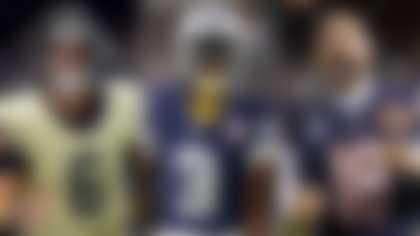Ben Roethlisberger and Aaron Rodgers are both accomplished passers that will present a serious challenge to the opposing defenses, but it is their ability to scramble that will have coordinators Dom Capers and Dick LeBeau up at night.
Part of what makes Roethlisberger and Rodgers so successful is their mobility and ability to feel the defense closing in. Roethlisberger gets sacked more frequently, but he also breaks tackles and extends plays on a regular basis. Rodgers has a quick delivery, but is not opposed to taking off.
LeBeau and Capers are studying the playoff games, as well as the 2009 tilt between these two teams. Each believes in pressure defenses from the 3-4 package. However, before they can construct an intelligent plan, they must look at the down-and-distance tendencies, personnel groups employed, field zones the quarterback attacks, critical protection schemes, and, of course, when and where the signal-callers escape.
In the Steelers game from 2009, Rodgers had three rushes for 22 yards and a touchdown. He hasn't slowed down in the playoffs this year, carrying 12 times for 56 yards and two touchdowns in three games. LeBeau has to get those rushes under control, especially down in the red zone when those touchdowns surface.
For Capers, he has to look figure out how to deal with Roethlisberger, who rushed for 7 yards against the Packers last season and has 17 carries for 32 yards and a touchdown in two playoff games this year.
Both quarterbacks want to beat you with their arm, but they will hit the escape button if your coverage is too good.
Rodgers and Roethlisberger are excellent at extending plays by leaving the pocket and not crossing the line of scrimmage, instead resetting the pass play and incorporating "scramble" receiver rules. When they leave the pocket in this fashion, the receivers all change their routes with the short targets going deep and the deep options working back toward the quarterback. The integrity of the coverage is then challenged.
Roethlisberger does a lot of damage to his left in these situations, and Capers has to build a wall with his pass rush to account for that aspect. Rodgers does a lot of his escaping to his right, meaning LeBeau needs to build a wall the same way. One NFL defensive coordinator told me the key point with these two quarterbacks is to force them to escape with depth and make sure they continue to work deeper away from the line of scrimmage and never let them set their feet.
Keep in mind, Rodgers and Roethlisberger see a lot of work against the zone-blitz scheme the opposing defensive coordinator employs. While they are familiar with most of the pressure calls, some will be unknown. The clues to how things will develop are in the 2009 game. In that matchup, Rashard Mendenhall and Ryan Grant were healthy, but both teams came in throwing the ball against defenses they knew well. By the end, there were 100 pass plays called, 973 total yards, six touchdown passes and 73 points scored. The Steelers won, 37-36. No one stopped anyone. Roethlisberger was sacked five times and still threw for 503 yards. The Steelers only got to Rodgers once while he connected for three scores. I think both defensive coordinators are expecting the same kind of fireworks this time around, but that will not stop a wide variety of pressure calls and two- or three-man rushes on occasion.
In looking at Capers' pressure calls, especially with Pro Bowl center Maurkice Pouncey injured, I expect a lot of double inside linebacker blitzes. B.J. Raji is hard to block, so as he works the center one way, linebackers Desmond Bishop and A.J. Hawk will blitz off Raji and try to get in Roethlisberger's face. The key to that tactic will be the defensive ends' contain, which would keep Roethlisberger from getting outside. Also Charles Woodson will likely blitz off the slot receiver when Pittsburgh goes to its three-receiver package, usually on third down. Woodson not only comes off the edge, but he will occasionally loop inside and can get there because he's so quick. If Capers feels the Steelers are waiting for Woodson, he will switch the call and send corner Tramon Williams. This is the pressure call that could catch Roethlisberger on his blindside. Of course, we haven't even mentioned Clay Matthews, who should set the protection calls and set up the pressures. Matthews got to Roethlisberger twice last time and he will do most of his damage in the three- and four-man rush calls while Big Ben holds the ball looking to beat coverage.
LeBeau has two of the best pass-rushing outside linebackers in James Harrison and LaMarr Woodley. Sending both of them with a defensive lineman like Brett Keisel dropping into coverage is one of the Steelers' best calls. LeBeau also has Troy Polamalu, who causes similar problems to what Woodson presents. When and where he comes from is the challenge for Rodgers. Rodgers is very mobile, and it would be a surprise if we saw many inside linebacker pressure calls. The same can be said for corner pressures because of the Packers' talented receivers and Rodgers' quick release.
Keep an eye on the defensive linemen dropping into coverage like Raji did when he picked off a pass and scored in the NFC Championship Game. The same can be said for blitzers that snatch the running back and don't let him release on a route. And there will also be delayed blitzers when either quarterback breaks contain.
When all is said and done, Super Bowl XLV will likely have 80-plus pass plays called and more than 40 blitzes. Even though Rodgers and Roethlisberger won the chess match the last time they faced these two defensive geniuses, no way will LeBeau or Capers will let them feel comfortable on Super Sunday.



